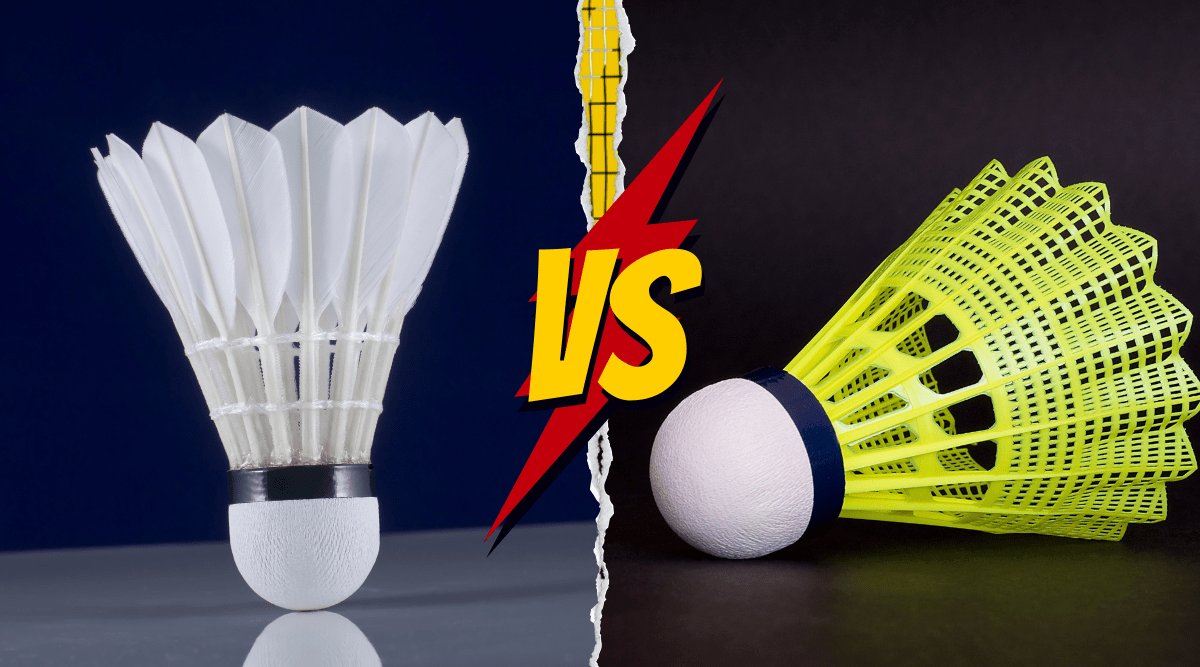Feather vs. Nylon Badminton Shuttlecocks: Weighing Your Options
Badminton, a popular racket sport played worldwide, is known for its fast-paced action, strategic gameplay, and the unique shuttlecock, often referred to as a "birdie." The shuttlecock is an essential element of the game, designed to create an unpredictable flight trajectory, challenging players to react and adapt quickly. When choosing a shuttlecock, there are two primary types to consider: feather and nylon. In this blog post, we will delve into the differences between these two types of shuttlecocks, examining their material, flight characteristics, durability, and cost to help you make an informed decision.
-
Material
Feather Shuttlecocks: Feather shuttlecocks are made from the feathers of ducks or geese, typically using 16 feathers per shuttlecock. The feathers are inserted into a rounded cork base, with a thin leather or synthetic layer covering the top. The feathered skirt creates the unique flight trajectory that badminton is known for.
Nylon Shuttlecocks: Nylon shuttlecocks are made from synthetic materials, typically nylon or plastic. Like their feathered counterparts, they also feature a rounded cork base. The nylon skirt is designed to mimic the flight of a feather shuttlecock but is more durable and less affected by humidity.
-
Flight Characteristics
Feather Shuttlecocks: Feather shuttlecocks offer a more natural and accurate flight pattern, due to the aerodynamic properties of the feathers. They have a smooth, slow descent and tend to decelerate more rapidly, allowing for better control and a more varied range of shots.
Nylon Shuttlecocks: While nylon shuttlecocks have been designed to imitate the flight of feather shuttlecocks, they are not as accurate. They tend to have a faster initial speed and a more linear trajectory. This can make them harder to control, particularly for beginners. However, more advanced players may appreciate the faster pace and added challenge.
-
Durability
Feather Shuttlecocks: One of the downsides of feather shuttlecocks is their lack of durability. The feathers can become damaged, bent, or broken, affecting the shuttlecock's flight and requiring frequent replacement. Humidity can also impact the performance of feather shuttlecocks, causing them to become soggy and less aerodynamic.
Nylon Shuttlecocks: Nylon shuttlecocks are more durable and long-lasting compared to feather shuttlecocks. The synthetic material is resistant to damage and can withstand more vigorous play. Additionally, nylon shuttlecocks are less affected by humidity and can maintain their performance in varying conditions.
-
Cost
Feather Shuttlecocks: Feather shuttlecocks are generally more expensive than nylon shuttlecocks, due to the cost of materials and the production process. Additionally, their shorter lifespan can result in higher long-term costs.
Nylon Shuttlecocks: Nylon shuttlecocks are more affordable than feather shuttlecocks, making them an attractive option for recreational players or those on a budget. Their durability also means that they need to be replaced less often, resulting in lower long-term costs.
When choosing between feather and nylon badminton shuttlecocks, it's essential to consider your specific needs, preferences, and budget. Feather shuttlecocks provide a more authentic and accurate flight, but they are less durable and more expensive. Nylon shuttlecocks offer a more budget-friendly and durable option, but their flight characteristics may not be as accurate as their feathered counterparts. In the end, the choice comes down to personal preference and how you prioritize factors such as material, flight performance, durability, and cost.






![Best Badminton Rackets For All Budgets 2024 – The Complete Guide.[Updated] - Smash Racket Pro](http://smashuk.co/cdn/shop/articles/best-badminton-rackets-for-all-budgets-2024-the-complete-guideupdated-678107_100x80_crop_center@2x.png?v=1744319751)